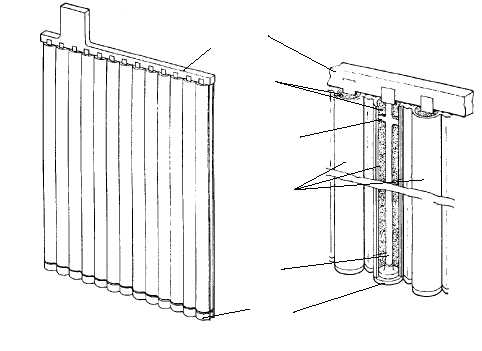Plate Forming Update:
Having read from a few sources, including Lyndon Lamar's Storage Battery Engineering, I am confident that the correct way forward is to (a) charge, (b) discharge, (c) reverse polarity, and repeat.
There is also a method listed in that book which I find practical, unless I have read it wrong.
From page 126: "(Norden's method of forming Plante plates): In the formation, a peroxide is added to the solution, in order to form the continuous reduction of lead peroxide to sponge lead. Norden recommends the addition of Potassium Permanganate[...]."
Now potassium permanganate is easily available from chemists. So is hydrogen peroxide albeit I'm not going to risk using the latter as I've read somewhere that it can form something terrible called Piranhic acid when added to Sulphuric acid.
So I guess I'll be adding a pinch of potassium permanganate to each cell since the quantity is not mentioned in the book. Someone knowledgeable should advise perhaps.
I know this will continuously add sponge lead to the positive plates on each polarity reversal of charge, and then the additive is bound to disintegrate eventually, leaving a lot of sponge on all plates (not too much I hope), the positive ones should then turn to lead peroxide on the next charge.
Having read from a few sources, including Lyndon Lamar's Storage Battery Engineering, I am confident that the correct way forward is to (a) charge, (b) discharge, (c) reverse polarity, and repeat.
There is also a method listed in that book which I find practical, unless I have read it wrong.
From page 126: "(Norden's method of forming Plante plates): In the formation, a peroxide is added to the solution, in order to form the continuous reduction of lead peroxide to sponge lead. Norden recommends the addition of Potassium Permanganate[...]."
Now potassium permanganate is easily available from chemists. So is hydrogen peroxide albeit I'm not going to risk using the latter as I've read somewhere that it can form something terrible called Piranhic acid when added to Sulphuric acid.
So I guess I'll be adding a pinch of potassium permanganate to each cell since the quantity is not mentioned in the book. Someone knowledgeable should advise perhaps.
I know this will continuously add sponge lead to the positive plates on each polarity reversal of charge, and then the additive is bound to disintegrate eventually, leaving a lot of sponge on all plates (not too much I hope), the positive ones should then turn to lead peroxide on the next charge.








Comment